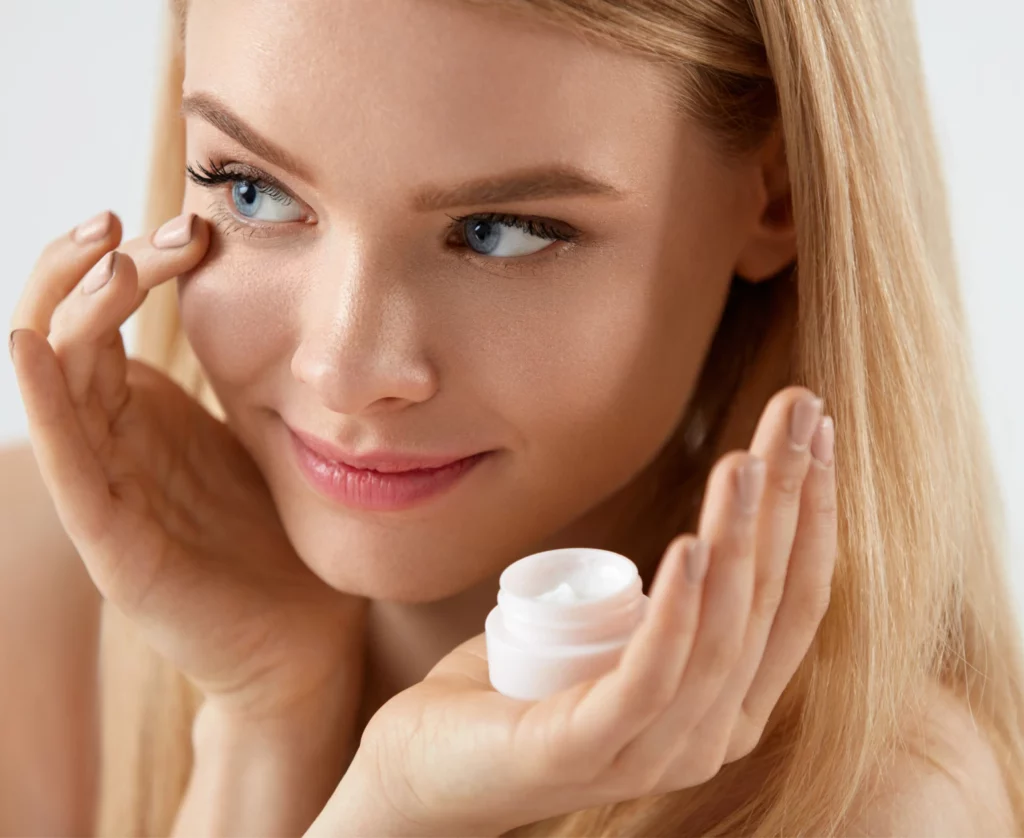How Long to Use Ointment After Blepharoplasty?

Table of contents
Achieving optimal results after blepharoplasty, a popular eyelid surgery, requires diligent post-operative care. Whether you’ve undergone upper or lower eyelid surgery, incorporating eye ointment into your healing process plays a vital role in ensuring smooth recovery and minimizing risks. This guide explains the importance of eye ointment after blepharoplasty, how long to use it, the role of contact lenses during recovery, and the best practices for application.
Eye ointment is an integral part of the healing process after blepharoplasty. It moisturizes the sensitive skin around the eyelids, reducing dryness and irritation while protecting incision sites from infection. Keeping the surgical site hydrated aids in reducing redness and discomfort, promoting faster healing.
Additionally, eye ointment acts as a protective barrier over the incisions, minimizing the risk of infection and shielding the sensitive eyelid skin from bacteria. Patients who follow their doctor’s post-operative instructions, including the consistent use of ointment, are less likely to experience complications like scabbing or delayed recovery. Proper application also helps minimize scars and supports smoother healing.
General Timeline for Using Eye Ointments in Recovery
The timeline for using eye ointment after eyelid surgery generally varies depending on the procedure and the patient’s healing process.
Upper Eyelid Surgery
After upper eyelid surgery, eye ointment is typically applied for 7 to 10 days. This allows the incisions in the natural lid crease to heal effectively. Regular use of ointment prevents irritation and ensures the surgical site remains moisturized, which minimizes swelling and discomfort during the first week.
Lower Eyelid Surgery
Patients who undergo lower eyelid surgery may need to use eye ointment for up to 14 days, as this procedure often requires more delicate care. The ointment protects the incision sites, while pain medication reduces eyelid swelling, and minimizes the risk of infection during the recovery process.
Each patient’s recovery is unique, so it’s essential to follow your doctor’s specific post-operative instructions. This personalized guidance ensures the best results and reduces the risk of complications.
Proper application of eye ointment is crucial for achieving the best results and avoiding complications.
Before applying ointment, wash your hands with warm water and soap to prevent introducing bacteria to the surgical site.
Squeeze a small amount of eye ointment onto a clean cotton swab or your fingertip. Avoid allowing the tip of the ointment tube to touch your skin or incision area to maintain sterility.
Gently apply a thin, even layer of ointment to the area. Overapplying can trap excess water and dirt, increasing the risk of infection or irritation.
Most surgeons recommend applying eye ointment 2–3 times daily. Adhering to these guidelines ensures optimal healing during the first week.
Avoid rubbing, itching or scratching the sensitive skin around your eyes, as this can disrupt the incision sites and prolong recovery.
Knowing when to stop using eye ointment is an important step in your recovery journey post surgery. Discontinuing ointment use too early could leave the surgical site vulnerable, while prolonged use might not offer additional benefits.
Signs of Healing
You may stop using eye ointment once:
Transition to Other Products
After discontinuing ointment, your doctor may recommend transitioning to moisturizers or sunscreen to aid in maintaining skin health and protecting against UV damage.
Proper application of eye ointment is crucial for achieving the best results and avoiding complications.
Applying too much ointment can clog the incision sites, slowing the healing process.
Inconsistent use of ointment can leave the surgical site unprotected, increasing the risk of infection.
Avoid rubbing or scratching the eyelids to prevent irritation, bruising or damage to the healing skin.
Always follow your doctor’s post-operative instructions closely. Deviating from these guidelines can lead to delayed recovery, pain or complications.
Using eye ointment after blepharoplasty is a vital part of the healing process. It helps moisturize the skin, protect the incision sites, and minimize discomfort. Avoid wearing contact lenses during the early stages of recovery and follow your doctor’s instructions to ensure the best results. By keeping your head elevated, using cold compresses, and taking prescribed medications, you can further aid in reducing swelling and discomfort.
Adhering to these practices and maintaining good hygiene will promote a smooth recovery and help you achieve the desired final results from your eyelid surgery.